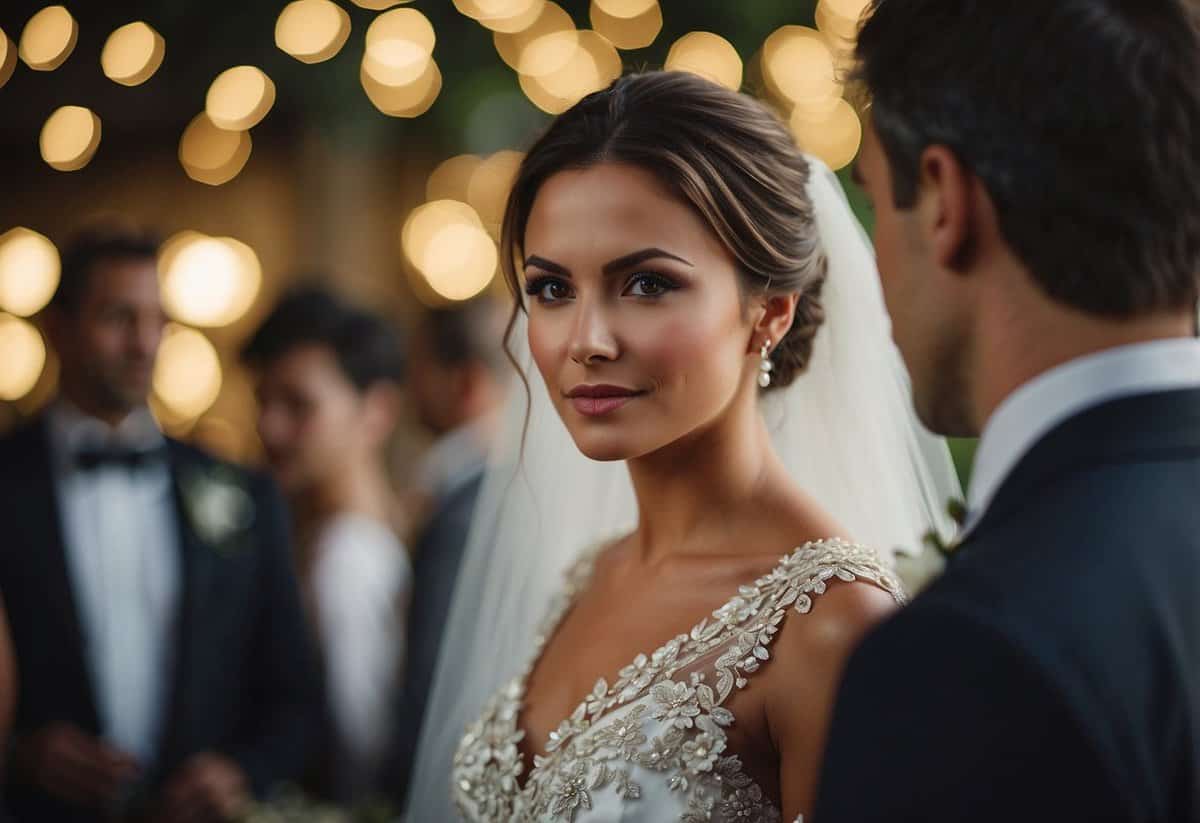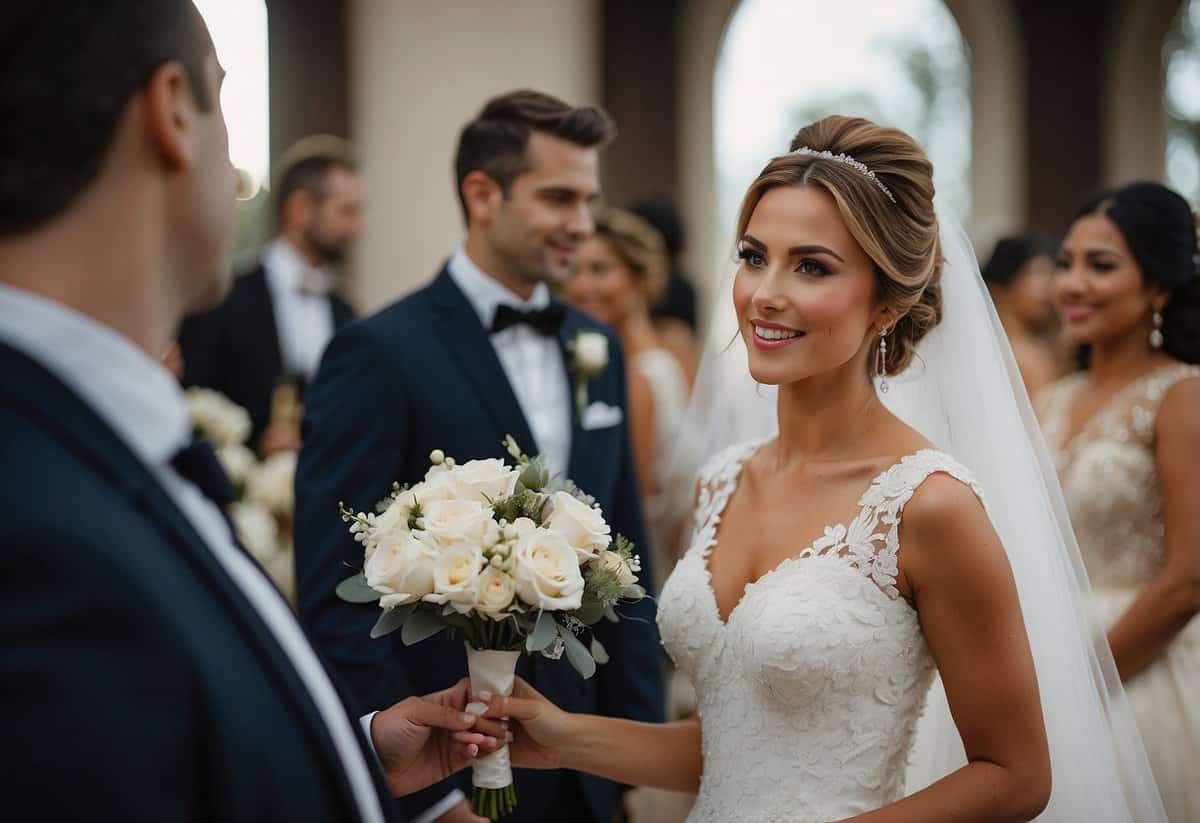Can the Bride See What the Groom is Wearing? Wedding Traditions Explained
Planning a wedding involves many decisions, some rooted in tradition and others in personal preference. One question that often comes up is: Can the bride see what the groom is wearing before the wedding? There is no hard rule, so it really depends on what you both want.

In some cultures, it is customary for the bride to see the groom’s suit before the big day. For example, during Indian weddings, there is often a “first look” where you both get to see each other’s outfits. Meanwhile, some Western traditions prefer to keep it a surprise, linking it to good luck and adding to the excitement.
Ultimately, your wedding day is about you and your partner. Whether you follow tradition or create new ones, the most important thing is to make choices that reflect your relationship and style. If you’re curious about how others handle this decision, you can read more about it here.
Historical Significance and Superstitions

In many cultures, the belief that a bride and groom should not see each other before the wedding ceremony is tied to various superstitions and historical traditions. This section explores why these practices have endured over time.
Origin of the Tradition
The tradition of the bride and groom not seeing each other before the wedding dates back centuries. In earlier times, marriages were often arranged, and families worried that if the couple met before the ceremony, they might get cold feet and cancel the wedding. Keeping them apart ensured the marriage would proceed as planned.
During these times, weddings were often more about alliances and less about romance. The bride and groom would first see each other at the altar, signifying the start of their union. This practice has evolved into a more romantic idea where the first look is saved as a special moment during the ceremony.
Superstitions and Beliefs
Many wedding superstitions arise from the idea of avoiding bad luck. One such belief is that if the groom sees the bride in her dress before the wedding, it brings bad luck and could jeopardize the marriage. These ideas are deeply rooted in cultural traditions across various societies.
Other superstitions include the well-known rhyme: something old, something new, something borrowed, something blue. Each item is believed to bring good luck and happiness to the bride. While some see these practices as outdated, many couples continue to follow them for a sense of tradition.
In modern times, the decision to see each other before the wedding often depends on personal preferences rather than superstitions. Some couples opt for a “first look” moment to calm their nerves and share an intimate moment before the ceremony.
Modern Perspectives on Groom’s Attire

Today’s groom’s attire is influenced by evolving traditions and western culture. These factors play a major role in the choices grooms make for their wedding day.
Breaking from Tradition
Tradition used to dictate that the bride and groom did not see each other’s outfits before the wedding. Now, many couples choose what feels right for them. Some brides actively participate in selecting the groom’s attire, including suit color and tie choices.
Participation helps ensure that the groom’s outfit complements the wedding style. Brides offer input on accessories like the pocket square, ensuring coordination with the wedding’s overall theme.
Couples are increasingly comfortable breaking from traditional norms. This flexibility results in more personalized and cohesive wedding day attire.
Influence of Western Culture
Western culture continues to impact wedding trends worldwide. The influence is evident in the rise of contemporary styles and fits for groom’s suits. Slim-fit suits and tuxedos are popular choices.
The trend extends to color options, with many grooms opting for shades beyond classic black. Navy, grey, and even burgundy suits are becoming more common.
Accessories also matter. Pocket squares and statement ties help make the groom’s attire stylish and unique. Western culture’s emphasis on individuality and style allows grooms to express themselves through their wedding day attire.
Modern weddings celebrate personal style and cultural influences, showcasing each couple’s unique preferences and vision for their special day.
The Role of the ‘First Look’

In modern weddings, the ‘first look’ allows the bride and groom to share an intimate moment before the ceremony. This trend mixes tradition with personal choice, balancing the desire for unique memories with timeless customs.
Pros and Cons
Pros
A ‘first look’ creates a private moment just for you and your partner. It’s a chance to connect and share your emotions without the eyes of the wedding party or guests. This can help calm pre-wedding nerves and offer a beautiful photo opportunity in a controlled environment.
Cons
For some, seeing each other before the ceremony breaks the tradition of suspense and excitement. In cultures where arranged marriages are common, such as in some Indian weddings, this practice may conflict with more traditional views.
Planning the Moment
Carefully plan the timing and location of your ‘first look.’ Choose a quiet, picturesque spot that captures the essence of your love story. Coordinate with your photographer to ensure the moment is captured beautifully, taking into consideration lighting and background.
Involvement of Others
Decide if you want this to be a completely private moment or if you want certain family members or the wedding party to witness it from a distance. This can add to the emotional impact and create a shared memory.
Flexibility
Keep in mind that this is your day. Be open to compromise if your partner has different ideas. You can still keep elements of surprise by not revealing your entire look or certain details until the ceremony.
Crafting a ‘first look’ that suits your unique preferences can make your wedding day even more special and memorable.
Attire Selection and Considerations

Choosing the right outfit for your wedding can be a fun and crucial part of your big day. This section explores dress codes and offers recommendations to help you make the best choice.
Dress Codes and Recommendations
Attire for a Formal Wedding:
When planning a formal wedding, the groom’s outfit should match the dress code. A classic choice is a tuxedo. Black tie events require grooms and groomsmen to wear tuxedos, while a black-tie optional dress code allows slightly more flexibility, such as a dark suit. Make sure the suit fits well and isn’t an ill-fitting suit, as this will impact the overall appearance.
Considering Different Fabrics:
Different fabrics can make a big difference in comfort and style. For a summer wedding, you might prefer a suit made from linen to stay cool. Conversely, a winter wedding could be a perfect occasion to wear a corduroy suit, adding warmth and texture.
Matching with the Bride:
Coordination with the bride’s attire can create a harmonious look. The bride’s involvement in selecting the groom’s outfit ensures that the groom’s suit complements her dress and the wedding theme. This participation can include picking colors, styles, and even specific accessories to create a unified appearance.
Practical Tips for Wedding Attire

Choosing the right wedding attire involves careful planning, from setting a budget to ensuring your outfit is perfectly altered. Here are some key considerations to help you look your best on your big day.
Budgeting for Attire
Setting a budget for your wedding attire is essential. On average, grooms spend between $200 to $499 on their wedding outfits. It’s important to keep your overall wedding budget in mind when deciding how much to allocate for attire. Consider renting if you’re looking to save money. Renting can cost less and still offer a wide selection of stylish options.
Think about all the costs involved, including shoes, accessories, and any necessary alterations. These additional expenses can add up quickly. Be sure to shop around, comparing different stores and online options to find the best deals. Don’t forget to account for hidden costs like dry cleaning and storage if you buy your suit early.
Timelines for Alterations
Getting the fit just right for your wedding attire requires time and planning. Aim to order your suit at least one month before the wedding. This allows ample time for any necessary alterations. You want to ensure your suit fits perfectly to avoid last-minute stress.
Schedule your first fitting as soon as the suit arrives. This initial fitting helps pinpoint any adjustments needed. Plan additional fittings closer to the wedding day to accommodate any changes in weight or body shape. Communicate clearly with your tailor about your timeline and expectations to avoid any surprises.
If you’re ordering online, check if the retailer offers a free try-on option. This can ensure you like the style and fit before making a final decision. This kind of preparation can make all the difference in how you feel and look on your special day.


